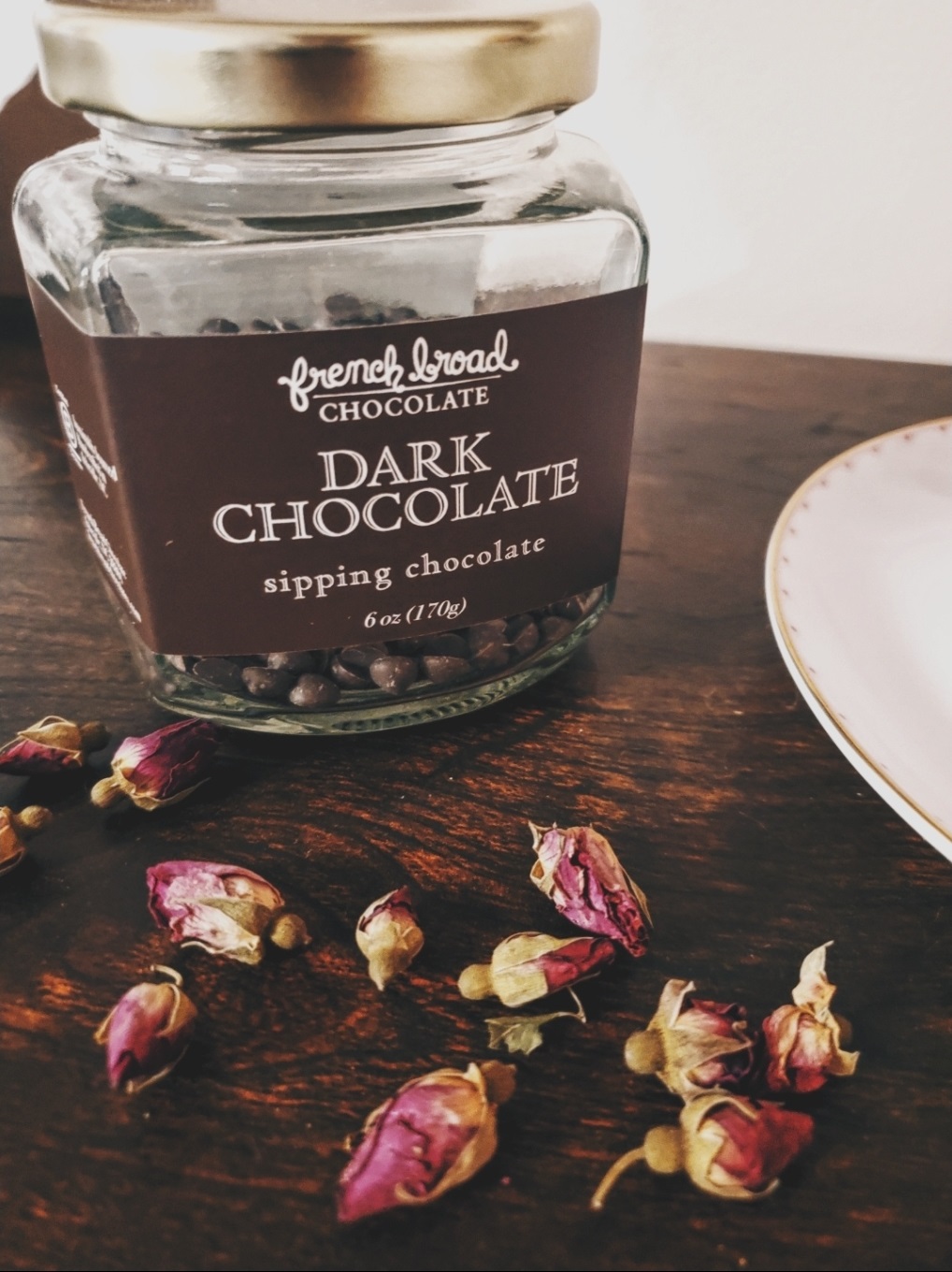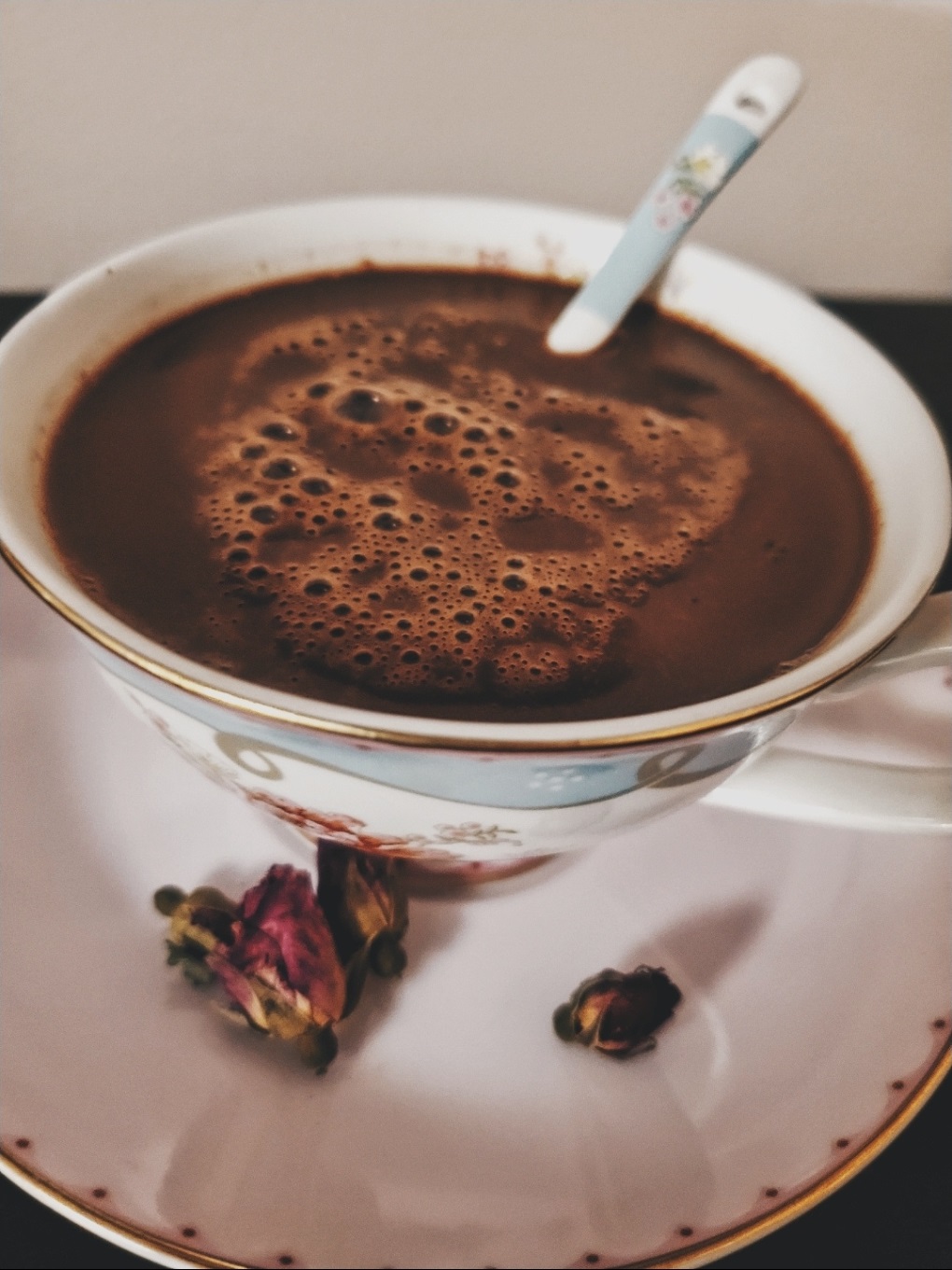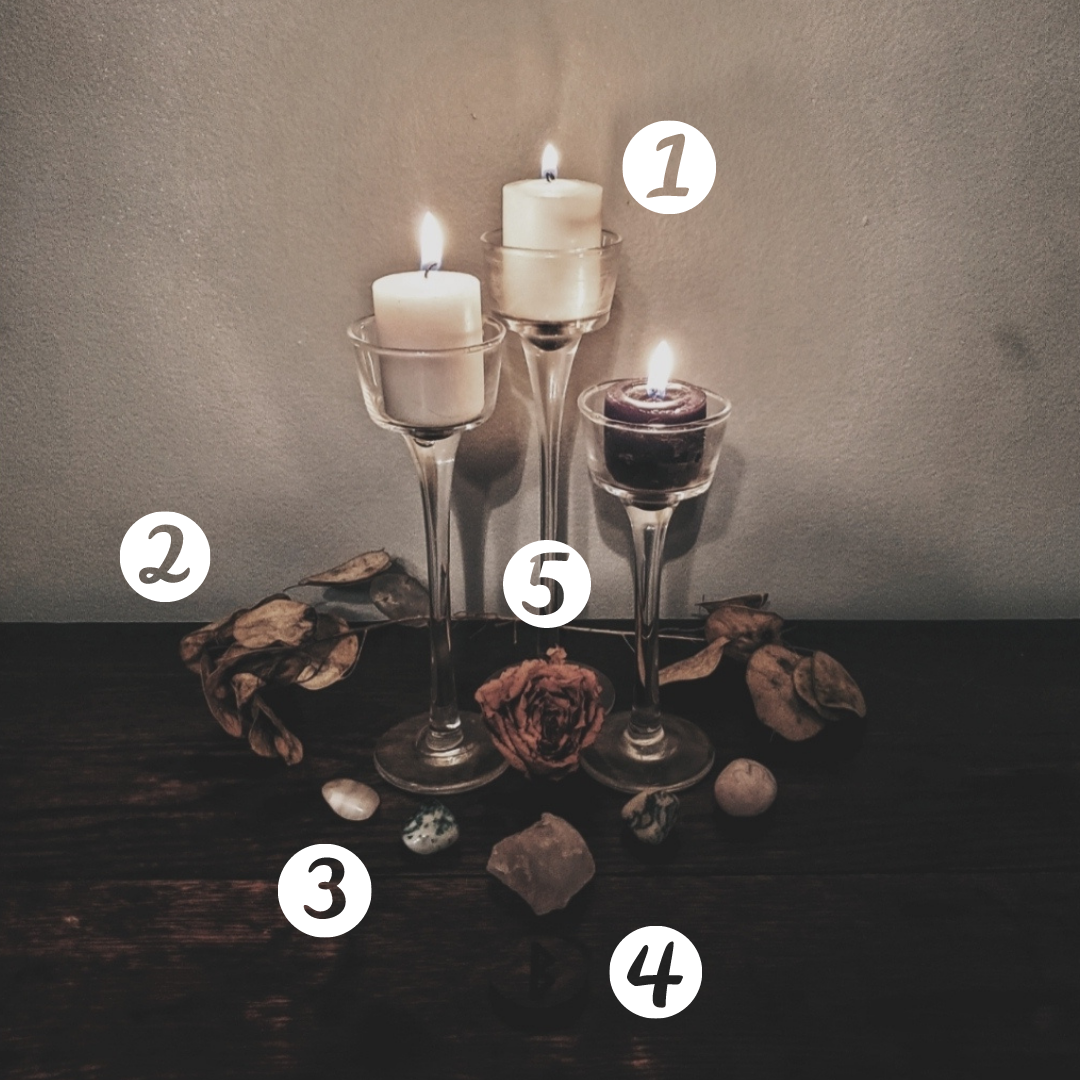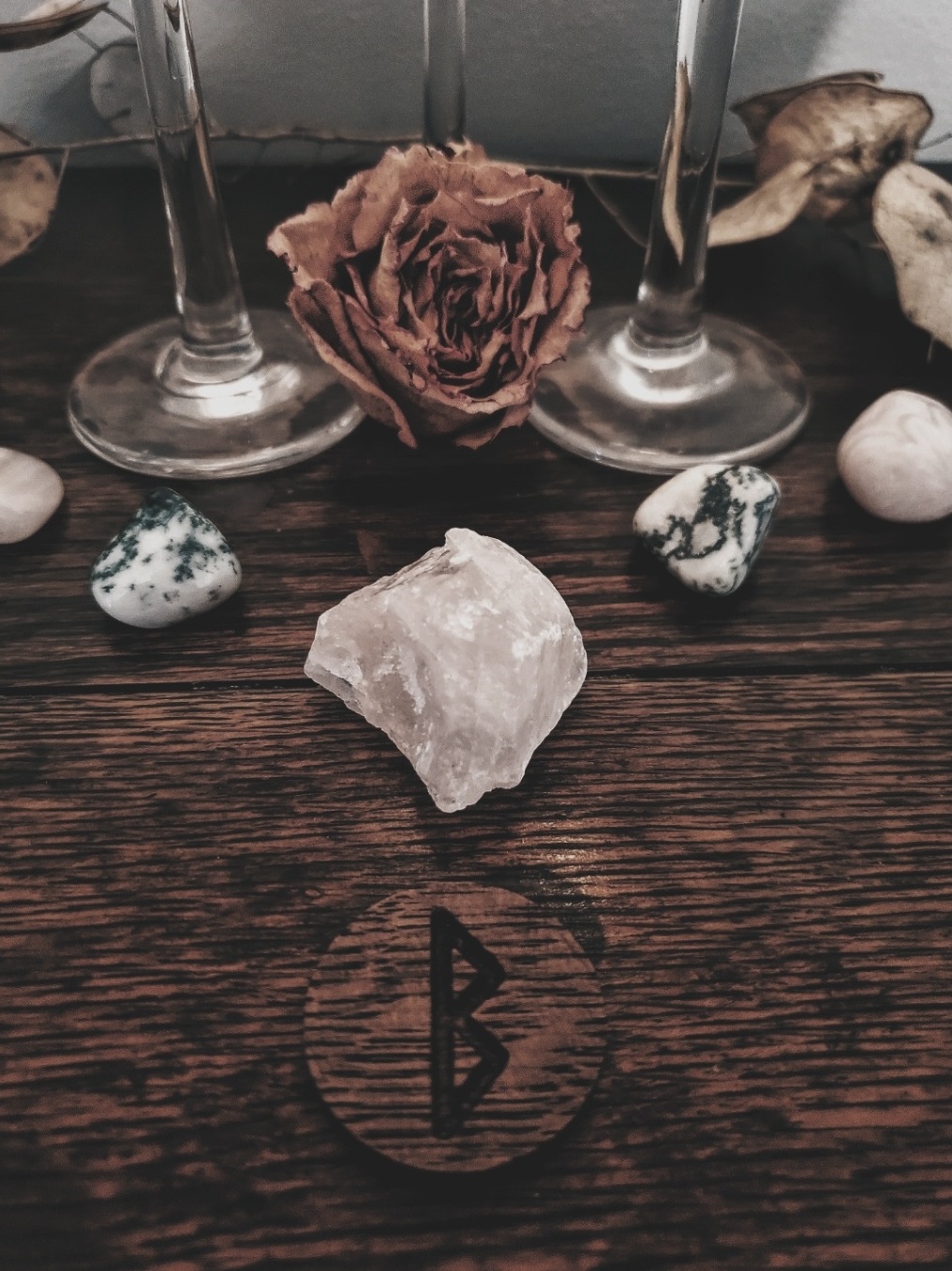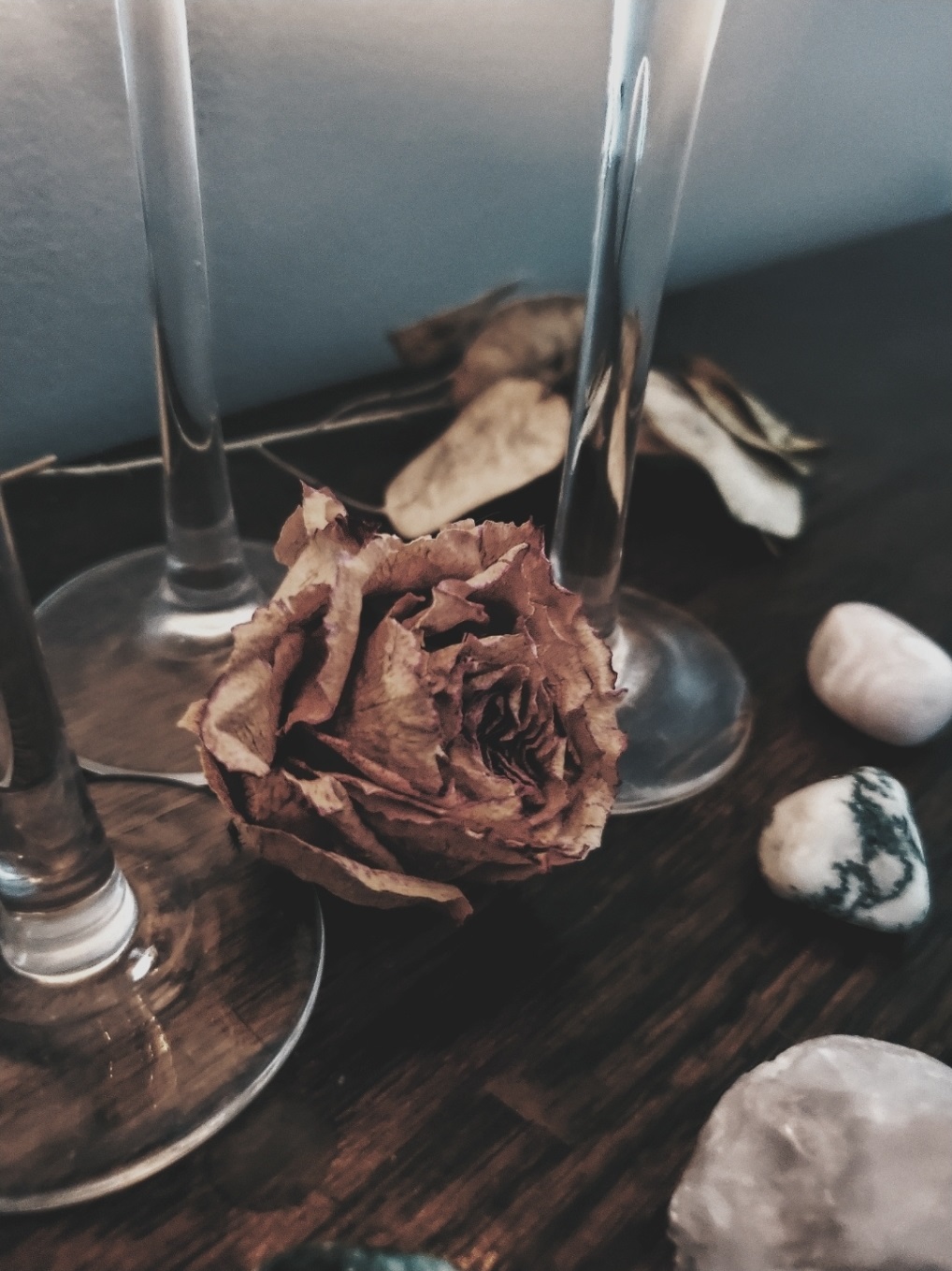If you liked this post and would like to support future content, please consider leaving a small tip in the jar.
Monday, February 21, 2022
Tuesday, February 15, 2022
Rose & Chocolate Love Potion
Love spells, rituals, and potions are a hotly debated topic in the world of witchcraft. Some witches believe that all love spells, including the one in this post, are wrong as they work against someone's free will. I do not subscribe to that thinking. Instead, I believe love spells, rituals, and potions work on what already exists, but that doesn't necessarily make all love spells ethical. There are certainly situations where manipulating the odds in your favor may not be entirely ethical, but that is for you to decide.
This love spell is designed to ignite passions and promote lust, whether it be in you or your lover. If you are in a relationship, I highly encourage you to drink this sipping chocolate with your lover, with their consent of course. Double the recipe to make enough for two people and serve as a dessert or whenever you are ready to take things to the bedroom. Today being Lupercalia, a pastoral pagan festival celebrated February 15th in Ancient Rome designed to purify and prevent infertility, I can see no better time to partake in this potion.
What You'll Need
- 1 cup milk of choice (I used creamy oat milk)
- 1 teaspoon rose petals
- 1/4 cup chopped dark chocolate or sipping chocolate (I used French Board Chocolate's Sipping Chocolate)
- 1/2 teaspoon cinnamon
- 1/4 teaspoon chili powder
What to Do
Combine milk and rose petals in a saucepan and heat until steaming but not boiling. Stir continuously to avoid scorching the milk and do not let it come to a boil. You may need to remove from heat and reheat several times. Allow the milk and rose to infuse for about 5 minutes. Strain and reheat the milk and rose infusion to steaming. Remove from heat and add chocolate, cinnamon, and chili powder. Whisk clockwise to draw love until well combined. As you stir, visualize your intention filling the love potion with pink and red light. Serve warm.
Why You Did It
Understanding the why's of a spell are just as important as performing it. It helps you understand the process so you can modify the spell or ritual to suit your needs and helps guide you to write your own. It's my intention that by providing these explanations, you can build a better understanding of how spells are written and executed so you can modify and build your own spells (the goal of my Spellcraft Series).For this spell, we combine milk, rose, chocolate, cinnamon, and chili powder to create a potent love potion. Milk is magically associated with fertility and abundance, as it provides nourishment for growing babies. I personally used oat milk in my potion, which is also associated with fertility and abundance. Roses are the quintessential flower of love and are used to encourage love and lust in this potion. Chocolate, cinnamon, and chili powder are all mild aphrodisiacs, thus promoting sexual energies and lust. Like roses, chocolate is also associated with love, while cinnamon and chili powder add some heat to the spell to spice things up and get your blood pumping.
Wish to break this spell? Unfortunately, this is not a spell to be undone. You have to let it work through your system.
Remember to record this ritual on your ritual/spell worksheet or in your Book of Shadows for reference later.
***
I hope everyone has a wonderful Lupercalia, whether you are celebrating alone or with others. May your future be full of love.
If you liked this post and would like to support future content, please consider leaving a small tip in the jar.
Label:
Grimoire
,
hedgecraft
,
hedgewitch
,
hedgewitchery
,
potion
,
ritual
,
spell
,
spells
Thursday, February 10, 2022
Book Review: Wild Witchcraft by Rebecca Beyer
Disclosure: Some of the links below are affiliate links, meaning, at no additional cost to you, I will earn a commission if you click through and make a purchase. I received a free copy of this book in exchange for an honest review.
I've been doing a lot more reading lately, especially compared to last year, but I have been focusing on books I want to read instead of just books I've been asked to review. Still, I always find time to read new and upcoming occult books so I can let you know if they are worth the purchase or not. Today I come to share the upcoming book Wild Witchcraft: Folk Herbalism, Garden Magic, and Foraging for Spells, Rituals, and Remedies by Rebecca Beyer.
First and foremost it should be noted that Beyer is an expert in her field. Not only is she a skilled witch, herbalist, and forager who routinely teaches classes on such topics, but she also holds a B.S. in Plant and Soil Science as well as a Masters in Appalachian Studies and Sustainability. This is a woman after my own heart and means that she is one of the most qualified witches out there to teach sustainable folk herbalism, garden magic, and foraging. Furthermore, she teaches with respect to indigenous cultures, taking a decolonized approach to sustainability and land management. This is so uncommon in both the occult and environmentalism worlds that seeing it show up in a book about both was a breath of fresh air in a room full of stagnation.
Wild Witchcraft is divided up into four sections. The first section covers a brief history of witchcraft and foraging, particularly in the United States, followed by sections on sustainable gardening and foraging, plant folklore, and herbal remedies and spells using the Wheel of the Year. Beyer, who lives and works just outside of Asheville, North Carolina in the Appalachian Mountains, takes a very local approach to her craft, as she should since she is teaching witches to practice sustainably. Practicing local witchcraft is also much more powerful than trying to import ingredients from thousands of miles away and much more environmentally friendly. This means that many of the plants and fungi mentioned in the book are found in the South East. Of course, as someone residing in Georgia in the foothills of the Appalachian Mountains, this spoke to my soul. These are plants that grow in my backyard, which is not something I often find extensively talked about in many herbal books. Many of the plants discussed in other books are based on more traditional European and Northern climates, meaning that not all of them are accessible to me. While this may put some readers off, the information offered by Beyer is still valuable. Many of the plants mentioned in the book extend far north or have similar counterparts in other regions. Furthermore, Beyer includes so much folklore and medicinal history, folklore not even I have heard, all of which is well-sourced and documented at the end of the book. The bibliography for this book is extensive and one I will be referring back to while doing research of my own. For obvious reasons, the plant folklore was my favorite part of the book.
As mentioned earlier, Beyer takes a very decolonized approach to land management, foraging, and sustainable gardening. Many of her techniques are modeled after indigenous practices, thus showing respect to the land and the people who came before us. She is sure to call out cultural appropriation when necessary and offers alternative practices, plants, and spells to use instead. I am excited to implement some of the strategies for foraging and gardening outlined in her book in my own garden. Honestly, it convinced me to go ahead and order seeds and start looking at some new raised bed and composting options. My goal is to continue to grow my little farm to eventually sustain me and my family, thereby shrinking my ecological footprint.
The book ends with a dive into the Wheel of the Year, with spells and herbal remedies for each. Some of the spells are relatively common with a distinct Appalachian flare. It was the remedies and teas I liked best and look forward to trying in my own home. This section is a beautiful guide to living more in sync with the Earth's natural cycles. This book combines incredibly well with Seasons of a Magical Life by H. Byron Ballad, who is also from Asheville, NC. The South behaves so differently from more northern climates, that it's nice to have two books discussing these differences.
I highly recommend Wild Witchcraft: Folk Herbalism, Garden Magic, and Foraging for Spells, Rituals, and Remedies by Rebecca Beyer and know it's a book many of you will want to add to your shelf, even if you are not from the South East. Wild Witchcraft is available for pre-order now and will be released May 10, 2022. If you are interested in learning more about Beyer, signing up for one of her classes, or interested in her other works, visit her at Blood and Spicebush.
If you liked this post and would like to support future content, please consider leaving a small tip in the jar.
Monday, February 7, 2022
Imbolc/Winter Thermstice Altar 2022
Imbolc or the Winter Themstice, whose history is sketchy at best, is and was a celebration of light. It marks the midway point between the Winter Solstice and the Spring Equinox, meaning that its exact date of celebration changes each year as the solstice and equinox change. Many witches, however, choose to celebrate the Winter Themstice (Imbolc) on February 1st, while astrologically it fell on February 4th this year (2022). During this time, sympathetic magic is worked to coax the Sun to return and with Him the return of life on Earth. Candles were lit in mass as a result, bread was baked, and houses were cleaned to prepare for the return of Spring. This is one of my favorite times of the year. I love celebrations of light. I love lighting candles, cozying up to a warm fire, enjoying the crisp, cold air, the return of the cardinals and robins, and even the little bit of snow we sometimes receive here in Georgia. You can feel the Earth breathe a sigh as the days slowly lengthen, but Cailleach still rears her head, blasting the new buds with frost and chilling rain storms. To celebrate and honor this symbolism, I put together a simple, yet effective altar.
1. White Candles- Imbolc, the Winter Themstice, or Candlemas is a celebration of sympathetic magic to coax the return of the Sun. The candles on my altar are for just that purpose, to sympathetically call back the Sun and to aid in His return. They also represent the inner flame that burns even during the darkest and coldest of times. Here in Georgia, we are coming to the coldest time of the year, yet life is still found all around us. I picked white candles to represent snow and renewal while the black candle represents the darkness. The black candle is lower than the white candles, showing that light triumphs over the darkness this time of year. (Where did I get it: Dollar Tree 2017 & 2019; Cost: $5)
4. Berkano Rune- Berkano is the rune of new beginnings, rebirth, new life, plant life, wisdom, and sanctuary, all of which are characteristics of Imbolc thus making it the perfect addition to such an altar. It is placed front and center to represent these characteristics and draw them to my home. (Where did I get it: Blagowood; Cost: Won/Free (originally- $30 for set)
TOTAL COST: ~$13
Like my other altars, most of the items I use are found, made, or purchased for around $1, although if the items must be purchased by you, then the cost will be higher. I hope you find this sort of breakdown helpful, especially for those of you looking to create Instagram-perfect altars on a budget!
I hope each of you had a fantastic Winter Thermstice this year and may the rest of the year be just as bright.
If you liked this post and would like to support future content, please consider leaving a small tip in the jar.
Subscribe to:
Posts
(
Atom
)



